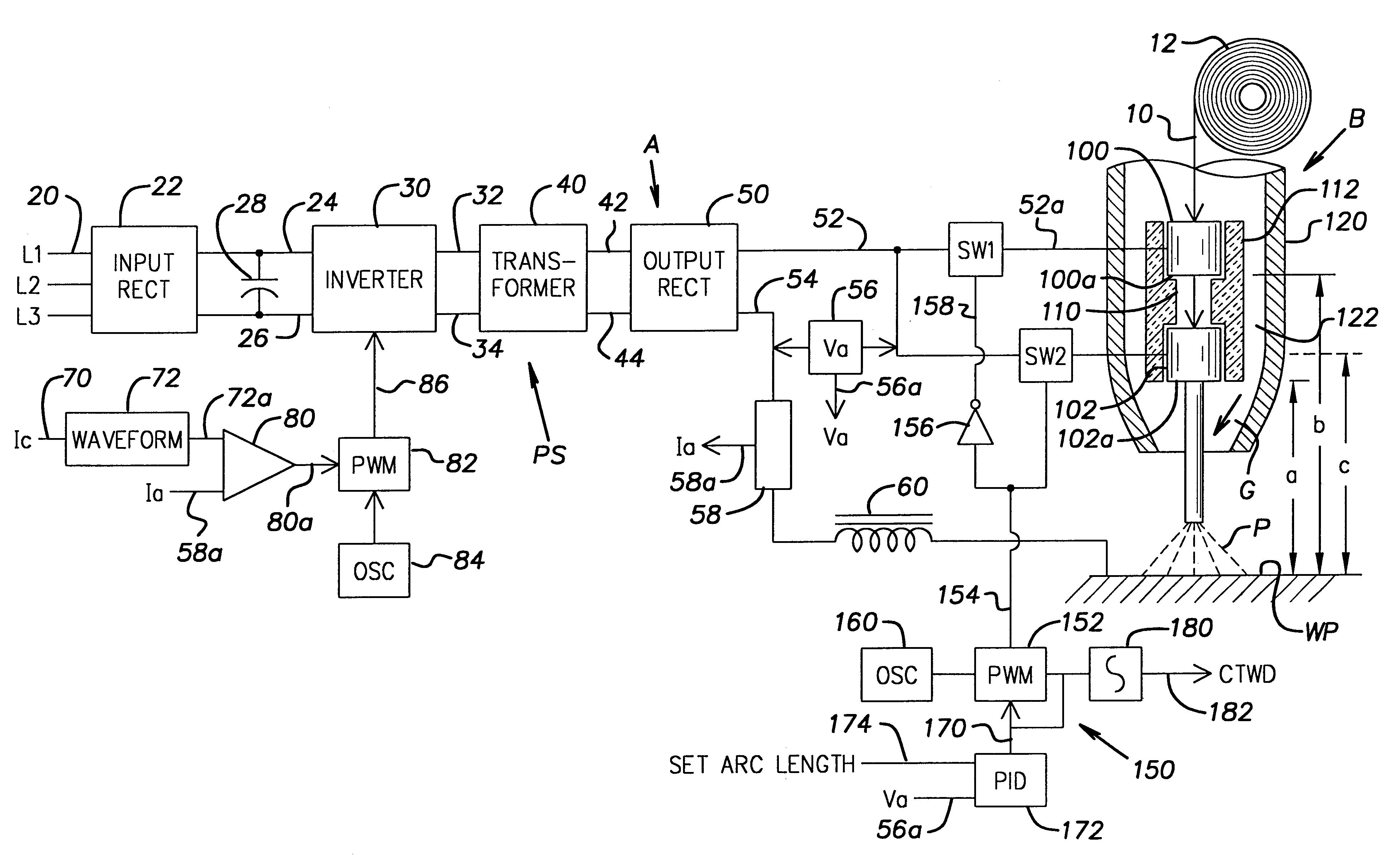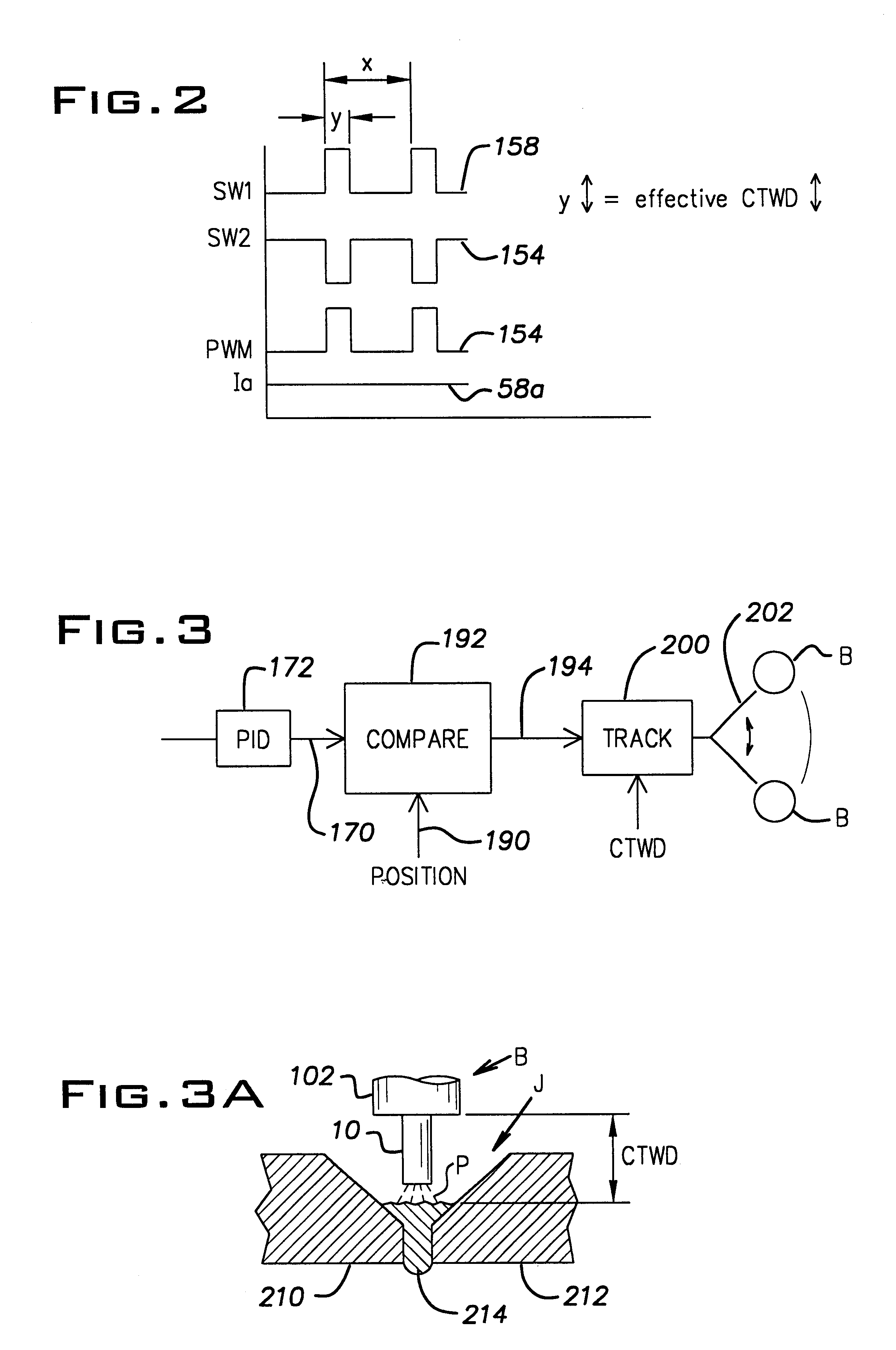Arc welder and torch for same
- Summary
- Abstract
- Description
- Claims
- Application Information
AI Technical Summary
Benefits of technology
Problems solved by technology
Method used
Image
Examples
Embodiment Construction
Referring to the drawings wherein the showings are for the purpose of illustrating a preferred embodiment of the invention only and not for the purpose of limiting same, FIG. 1 shows an electric arc welder A of the constant voltage type for providing weld current to torch or welding gun B so the torch can perform a welding operation. A consumable electrode or wire 10, supplied by a standard spool 12 and directed through the torch or gun B toward a workpiece WP, is melted at arc P. When the arc melts the end of wire 10 the molten metal is transferred to a weld bead on workpiece WP. Power supply PS is not a part of the invention and is arranged in accordance with somewhat standard architecture. In the illustrated invention it is an inverter unit; however, a traditional non-inverter power supply can be used. A three phase input 20 drives input rectifier 22 to produce a DC voltage across leads 24, 26 on opposite terminals of filter capacitor 28. A high speed switching type inverter 30 c...
PUM
| Property | Measurement | Unit |
|---|---|---|
| Time | aaaaa | aaaaa |
| Time | aaaaa | aaaaa |
| Frequency | aaaaa | aaaaa |
Abstract
Description
Claims
Application Information
 Login to View More
Login to View More - R&D
- Intellectual Property
- Life Sciences
- Materials
- Tech Scout
- Unparalleled Data Quality
- Higher Quality Content
- 60% Fewer Hallucinations
Browse by: Latest US Patents, China's latest patents, Technical Efficacy Thesaurus, Application Domain, Technology Topic, Popular Technical Reports.
© 2025 PatSnap. All rights reserved.Legal|Privacy policy|Modern Slavery Act Transparency Statement|Sitemap|About US| Contact US: help@patsnap.com



